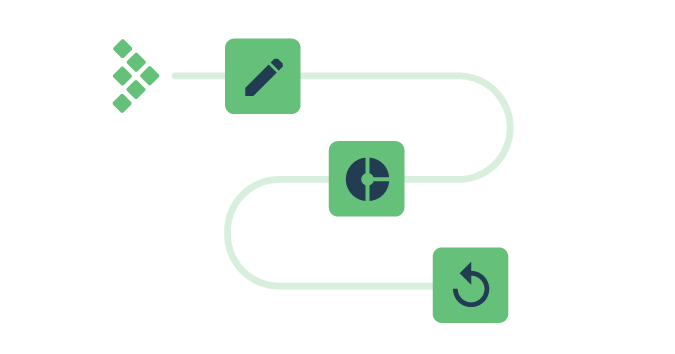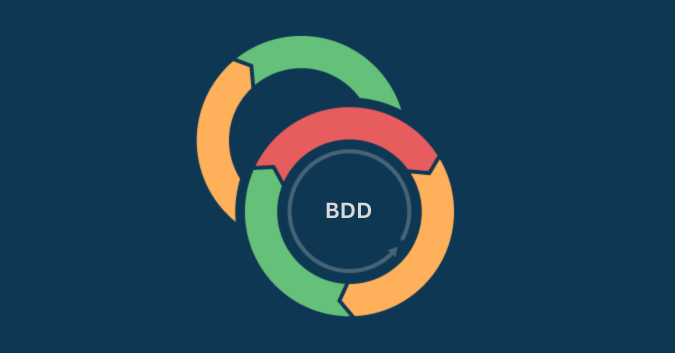End-to-end (E2E) testing scrutinizes an application’s entire workflow from the user’s perspective, offering significant value for comprehensive application testing. It identifies potential bugs that may affect real-world users in a live environment, ensuring seamless collaboration of all application components (internal and external). In the testing pyramid, end-to-end testing is conducted after the unit testing, integration testing, and system testing phases.
Refer to the real-world scenario below:
E2E test: Fund transfer through a mobile banking application
Due to the sensitive nature of financial transactions, E2E tests are essential for successful comprehensive application testing. In this example, we will write end-to-end testing steps for a mobile banking application.
The general steps are: the user logs in, initiates a fund transfer, and verifies the transaction status.
- Mobile app installation and launch
- Install the mobile banking app on your mobile device
- Tap on the app to check that the app launches successfully and asks for login credentials
- User authentication
- Provide valid user credentials to log into the banking app
- Verify that the app asks for multi-factor authentication (MFA), such as a one-time password (OTP) for secure login
- Complete the authentication
- Dashboard data
- After logging in, verify that the dashboard shows the correct user/account data: Account balance, account number, branch, etc.
- Verify that the quick access links and navigation on the dashboard are working properly
- Initiating fund transfer
- Select the fund transfer option from the mobile app
- Provide all required information: recipient account number, branch, amount, description for transaction, etc.
- Proceed and confirm the transfer
- Transaction authorization and processing
- Based on the app’s security measures, authorize the transaction with OTP, PIN, biometrics, etc.
- The transaction should be processed, and a confirmation message should be displayed
- The account balance should be updated accordingly
- Transaction notification
- Verify the receipt of a transaction notification via email, SMS, phone call, etc.
- Reviewing transaction status
- Navigate to transaction history and review the transaction details are recorded as expected
- Logout and session termination
- Logout from the app to verify that session termination is working
- Database checks
- Check the database to verify that the transaction details are recorded correctly
This example outlines the end-to-end mobile app workflow, encompassing installation, login, fund transfer, verification, and logout from the user’s standpoint. It assesses security, efficiency, user-friendliness, and ease of use.
Types of testing: Horizontal and vertical
You can perform E2E testing of a software application using two approaches: horizontal end-to-end testing and vertical end-to-end testing.
Horizontal E2E Testing:
Involves verifying the entire software/application flow incrementally, mirroring an end-user’s progression through all layers. It scrutinizes the entire business process, allowing you to proceed seamlessly from UI to business logic, data processing, database layers, and beyond.
For example, In a mobile banking application, it covers the comprehensive business flow: login, transaction initiation, processing, and database verification
Vertical E2E Testing:
Vertical E2E testing takes a more segmented and independent approach than horizontal E2E testing. It focuses on testing one individual layer at a time, either from the most granular level (e.g., database) to UI or vice versa. It can adopt a bottom-to-top or top-to-bottom approach in testing different layers of the application.
For example, in our mobile application example, you can begin by testing the database at the most granular level. Then, proceed to test the API for transaction processing before moving on to the user interface. Alternatively, you can adopt a top-to-bottom approach, starting from the UI and concluding with database verification.
Challenges in end-to-end testing
Considering the vast nature of E2E tests, various challenges can arise during testing:
Test and setup complexity
Designing E2E tests involves creating scenarios that cover the entire application workflow. As the application grows in complexity, so does the intricacy of test scenarios. Setting up the test environment to mimic real-world conditions, including configurations, databases, and external dependencies, adds to the overall complexity.
Increased execution time
E2E tests typically involve interacting with the application through its user interface, mimicking how a user would interact. This process takes more time than lower-level tests like unit tests. The increased execution time can result in slower feedback, affecting the agile nature of the modern software development life cycle (SDLC).
Unstable test cases
The stability of tests involving multiple system components can be inherently challenging. E2E tests can be sensitive to changes in the application, especially in the UI. Even minor modifications can lead to test failures. Additionally, environmental factors like network conditions or the state of external systems can introduce instability.
Difficult to maintain and debug
As the application evolves, the E2E test scripts must be updated to reflect UI, functionality, or business logic changes. Due to their end-to-end nature, debugging failures in E2E tests can be challenging. Identifying the root cause of a failure may require examining various components and their interactions.
Dependent on external systems
E2E tests often interact with external software systems, services, or APIs. Changes or downtime in these external dependencies can lead to test failures. Coordinating and managing these dependencies can be challenging, especially in complex and distributed systems.
Complex test data management
Generating and managing test data for E2E tests can be complex, especially when dealing with different test scenarios, user roles, and data combinations. Ensuring data consistency, availability, and repeatability is crucial for reliable testing.
Test coverage gaps
Achieving comprehensive test coverage in E2E testing is challenging. It may be impractical to cover every possible scenario, leading to potential gaps in coverage. Prioritizing critical paths and scenarios becomes essential to manage this challenge.
Image: A centralized test management tool like TestRail can improve your test coverage by identifying key metrics/ gaps in your QA process, streamlining your development process, and visualizing your test coverage.
Key principles of effective end-to-end testing
Three pillars of effective end-to-end software testing are:
1. Comprehensive test planning
A strong foundation, built upon comprehensive test planning, is essential to achieving your E2E testing goals in a structured manner. The key steps to follow include:
Define testing scope
Clearly define the objectives of end-to-end testing, including what functionalities and features fall within its scope and what do not. Establishing boundaries helps focus testing efforts effectively.
Know user requirements and flows
Understanding user requirements and flows is crucial for successful end-to-end testing. Analyze user stories, use cases, and business requirements thoroughly to grasp user expectations. This insight guides test case preparation and ensures alignment with user needs.
Assess risk and prioritize
Analyze business risks and prioritize areas of focus based on their impact. Based on this information, you should prioritize user scenarios or workflows that will drive the creation of test cases in the E2E testing process to ensure efficient allocation of resources and address high-risk areas first.
Create a good test strategy
Develop a robust testing strategy that aligns with the objectives of end-to-end testing. Based on project requirements and constraints, decide on the appropriate testing approach—manual testing, automated testing, or a hybrid model.
2. Test environment setup
The effectiveness of E2E testing is reliant on the extent to which the test environment mirrors the production setup. Consider the following aspects for a well-aligned test environment:
Closely replicate the actual environment
This step involves configuring a test environment that faithfully replicates the production setting. This includes setting up all necessary dependencies, networks, databases, and external connections to ensure accurate and reliable test results.
Set access and security controls
Implement access and security controls in the test environment to mirror real users’ conditions. This step ensures that testing accurately simulates the user experience, including any security measures in place.
Validate the test environment
After setting up the test environment, validate its accuracy to confirm that it faithfully reproduces the production conditions. This validation step is crucial to guarantee the reliability of subsequent testing activities.
Test environment maintenance
Update and maintain the test environment regularly to keep it consistent with the evolving production setup. This ongoing maintenance ensures that the test environment remains a reliable reflection of the live system, accommodating any changes or updates that occur over time.
3. Test data management
The success of end-to-end testing is closely tied to the quality of the test data utilized. Ensuring accuracy and relevance involves following these key steps:
Test data creation
Develop test data that is relevant and realistic, covering a spectrum of scenarios, including negative and edge cases. Well-crafted test data enhances the thoroughness of the testing process.
Privacy and confidentiality
Adhere to data regulations to uphold privacy and confidentiality standards. If the test data contains sensitive information, employ measures such as masking or encryption to safeguard confidentiality and comply with privacy requirements.
Data refresh and cleanup
Implement procedures for data refresh before test execution and cleanup afterward to prevent the accumulation of stale data that can compromise test results. This ensures that each test iteration begins with a clean slate, promoting accurate and reliable results.
Data accessibility
Securely store test data while maintaining accessibility when needed. Striking a balance between security and accessibility is crucial for seamless test execution. Ensure that authorized individuals can access the required data while preserving its integrity.
Best practices for effective automation in end-to-end testing
To ensure the effectiveness of end-to-end testing automation, consider the following best practices:
Regular communication
Facilitate regular meetings or stand-ups to foster communication regarding roadblocks, progress, issues, and potential solutions. Utilize collaborative tools like Slack, Jira, Confluence, etc., to streamline communication and maintain an open channel for team collaboration.
Example: A team employs Slack for daily updates and quick problem-solving discussions. Larger testing strategies and test progress are discussed in more comprehensive Zoom meetings, ensuring effective communication at both detailed and strategic levels
Cross-functional teams
To enhance the robustness of the end-to-end testing process, consider forming cross-functional teams with diverse roles, including developers, testers, business analysts, and other relevant project stakeholders. Each team member brings unique perspectives, contributing to a more comprehensive testing approach.
Example: A project team is composed of developers, QA engineers, a UX designer, and a product manager. This cross-functional team collaborates in sprints, with each member leveraging their expertise. This collaborative approach results in broader test coverage and facilitates the swift identification of potential issues during the testing phase.
Documentation and knowledge sharing
To ensure effective end-to-end testing, comprehensive documentation covering test plans, test cases, and results is crucial. To manage this documentation efficiently, utilize available tools in the market. Additionally, conduct regular knowledge-sharing sessions within the team to keep everyone informed of progress and emerging technologies.
Example: The team employs a test management platform to document test plans, end-to-end test scripts, and test results, providing accessibility to all team members. Regular workshops are conducted to discuss and disseminate knowledge about new testing tools or methodologies, fostering a collaborative learning environment.
Stakeholder involvement in E2E process
For a more refined approach to end-to-end testing, actively engage stakeholders and end users in the testing process. Soliciting their feedback at various testing stages enhances understanding and contributes to a more effective E2E testing strategy.
Stakeholders play a pivotal role in the testing process. They are involved in initial planning meetings to define test scenarios. Additionally, their input is sought after major milestones. This involvement ensures testing aligns closely with user expectations and overarching business objectives.
Reviews and retrospectives
Conduct post-release retrospectives to assess and identify successes and challenges in the end-to-end testing process to enhance continuous improvement.
Example: Following each release, the team conducts a retrospective to evaluate the performance of end-to-end testing. This includes discussions on successful aspects and challenges encountered during testing. Collaborative tools like Miro or Trello are employed to facilitate these retrospective sessions, promoting effective communication and documentation of insights for ongoing improvement.
Create feedback loops
Implement feedback loops to promptly communicate test results and issues to the development team, facilitating swift action.
Example: The team leverages Jenkins for Continuous Integration/Continuous Deployment (CI/CD), incorporating automated testing feedback into the development pipeline. In the event of failed tests, immediate notifications are sent to the development team, enabling rapid identification and resolution of issues.
Maintain test cases
Ensure the relevance of your test suite by regularly reviewing and updating test cases to align with changes in the software application. Identify and remove redundant or irrelevant test cases as needed.
Example: The QA team conducts periodic reviews of the test suite, eliminating outdated tests and incorporating new ones based on recent feature additions. This practice ensures the ongoing evolution of the test suite, keeping it current and reflective of the application’s status.
Image: Implement a test case review and approval process in TestRail Enterprise to ensure test cases meet organizational standards. This process makes it easy to build a test case library that accurately defines your application.
Upskill when needed
To stay relevant in the ever-evolving industry, continuous upskilling is crucial for technical roles. Host training sessions for the team as needed to ensure they stay ahead.
Example: The organization sponsors training sessions for the quality assurance team, focusing on advanced manual and automated testing tools and techniques. These sessions contribute to the team’s ongoing professional development, keeping their skills up-to-date with the latest advancements in the field.
How to choose the right tools for end-to-end testing
Here are the 7 most important steps to consider when selecting tools for end-to-end testing:
| Step | Why It’s Important | How to Follow |
| 1. Define testing objectives | Clear objectives guide tool selection, aligning with the project’s goals and desired outcomes. | •Tools should align with the project’s unique requirements, ensuring effective testing in the given context. |
| 2. Assess project requirements | Tools should align with the unique requirements of the project, ensuring effective testing in the given context. | •Collaborate with project managers, developers, and relevant team members. •Identify the technology stack, software/web application architecture, and specific testing scenarios with which your testing tools must be compatible. |
| 3. Consider the test environment | Compatibility with the test environment is crucial for seamless integration and effective testing across platforms. | •Document characteristics of the test environment (browsers, devices, OS). •Ensure tool compatibility with the identified environment. |
| 4. Automation framework support | Alignment with automation frameworks ensures consistency and standardization, facilitating efficient test script development. | •Evaluate existing automation frameworks in use. •Choose tools supporting these frameworks or widely adopted ones like Selenium, Cypress, or Appium. |
| 5. Integration capabilities | Integration capabilities promote a streamlined testing process, allowing tools to work seamlessly within the existing development ecosystem. | •Investigate integration capabilities through documentation or vendor contact. •Ensure seamless integration with CI/CD pipeline, issue tracking systems, and other tools. |
| 6. Cost considerations | Managing costs ensures that the selected tools align with budget constraints, contributing to the sustainability of the testing process over the long term. | •Compile a comprehensive cost analysis, including licensing, maintenance, and training. •Compare costs against budget constraints and long-term financial goals. |
| 7. Ease of use | Select user-friendly tools with a gentle learning curve. This is important if your team members have varying levels of technical expertise. | •Conduct usability testing sessions or seek feedback from users during trial periods. • Example: testRigor uses generative AI to let you quickly and easily perform end-to-end testing of web, mobile, API, and desktop applications in plain English. |
Image: Whether you are using popular tools such as Selenium, unit testing frameworks, or continuous integration (CI) systems like Jenkins—TestRail can be integrated with almost any tool.
Conduct trials with shortlisted tools, gather feedback from team members, and consider factors like community support and documentation during the selection process. This ensures efficient testing and long-term sustainability.
Try TestRail free today or join one of our live weekly product demos to see how you can leverage TestRail’s core functionalities to efficiently and effectively manage your software testing processes.



